Primo Levi was born 100 years ago this July. Philip Ball looks at his chemical and literary legacy
Chemistry is so often overlooked in science popularisation that it’s easy to forget it was once the science of choice for poets – Goethe, Novalis, Shelley and Coleridge all took a close interest in it. But chemistry has its own poet laureate, whose most famous work frequently tops polls of the best book on science ever written. The Italian writer Primo Levi, born 100 years ago this July, spent most of his professional life as a chemist, and he only wrote The Periodic Table after he retired. He was, however, by that stage already a famous author because of his other masterpiece, If This Is a Man, called by US writer Philip Roth ‘one of the century’s truly necessary books’. In that memoir of his time in the Nazis’ concentration camp at Auschwitz during the second world war, Levi displayed a powerful, profound and humane literary voice. That he happened to be a chemist is the discipline’s extraordinarily good fortune. It is the world’s also – if he had not been, it’s doubtful Levi would have survived the Holocaust.
He was an eloquent and wise witness to the very worst of which people are capable, and yet somehow ‘he gave us a true picture of the best of human nature’, according to his biographer Carole Angier. He also opened up science, and chemistry in particular, to an audience that would have never otherwise given it a thought. He celebrated the culture that was shared, he said, by ‘Empedocles, Dante, Leonardo, Galileo, Descartes, Goethe and Einstein’, as well as by ‘the good craftsmen of today, or the physicists hesitating on the brink of the unknowable’.
The island of reason
It’s surprising to discover, given his fame and his skill at communication, that Levi was very reserved – apparently a common trait among the Italians of Turin. Except for a year in Milan and one in Auschwitz, he lived all his life in the house on Corso Re Umberto in Turin where he was born on 31 July 1919 to a family of Jewish heritage.
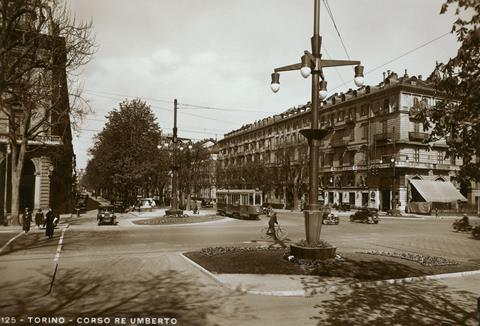
Shy and introverted as a boy, he played endlessly with Meccano and discovered early that science was his passion. Writing was no more than a hobby: he wrote a few poems and short stories in his youth (and continued to do so throughout his life), but said he never planned to be a writer, except perhaps of ‘scholarly articles about chemistry’.
Science, particularly chemistry, was for him an ‘island of reason’ – the very antithesis of the fascism that crept over Italy in the 1920s and 30s. To the young Levi, chemistry promised great philosophical truths, the key to ‘the secrets of heaven and earth’, pointing the way to ‘understanding the why of things’. Chemistry, he said, ‘represented an indefinite cloud of future powers, which enveloped my life to come in black coils riven by flashes of fire’.
But he also gave a more playful motive for his choice, one that will surely resonate with anyone who has ever stepped into an organic chemistry lab:
I have often suspected that, deep down, the motives for my boyhood choice of chemistry were different from the ones I rationalised and repeatedly declared. I became a chemist not (or not only) from a need to understand the world around me; not in reaction to the cloudy dogmas of Fascism; and not in the hope of riches or scientific glory; but to find, or create, an opportunity to exercise my nose.
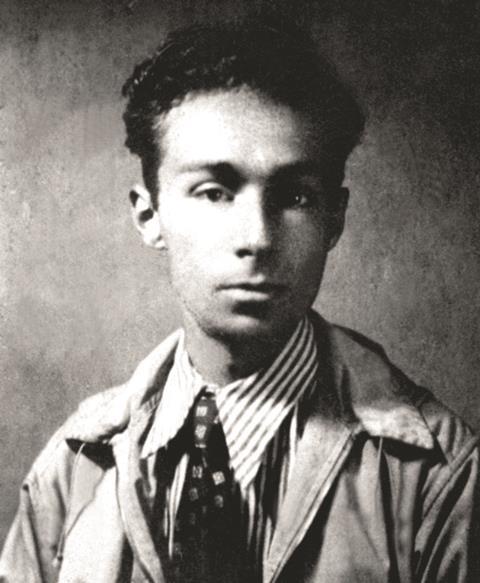
Levi studied chemistry at the University of Turin from 1937, where his classmates found him still quiet and sensitive. In the chapter ‘Zinc’ from The Periodic Table he describes his inorganic chemistry lecturer, identified only as ‘Professor P’ (his name was Giacomo Ponzio), as a cold man, prejudiced against women and miserly, with a ‘surly contempt for humanity’. Yet Levi liked him, finding him also to have an appealingly sardonic wit.
He liked it too that Ponzio was far too obstinate and skeptical to fall for fascism. ‘I was amused by the disdainful ostentation,’ he wrote, ‘with which at the exams he exhibited, instead of the prescribed Fascist shirt, a comic black bib no bigger than the palm of a hand, which at each of his brusque movements would pop out between his jacket’s lapels.’ The racial laws introduced by Fascist dictator Mussolini in the late 1930s forbade Jews to venture close to the country’s borders; they could not own any business, marry non-Jews, hold any public service job or a variety of other professions. They could not enrol at the universities, although Jewish students who had begun courses could finish them. Mussolini commissioned a document called ‘Manifesto of the Racial Scientists’, which claimed ‘Jews do not belong to the Italian race’. In ‘Zinc’, Levi uses chemistry to undermine this nonsense. He describes how he learnt that to dissolve zinc in sulfuric acid the metal must be a little impure. The moral is that ‘dissension, diversity are needed’ – but ‘fascism does not want them, forbids them… it wants everybody to be the same’.
Levi passed his exams with full marks, but the discriminatory situation made it hard for him to find an adviser for his graduation thesis in 1941: some professors ‘snidely or even arrogantly told me that the racial laws prohibited it’. He had decided that chemistry wouldn’t after all supply the deep answers he wanted – there wasn’t the precision, the logical deductions from basic axioms. ‘To prepare phenyl bromide or methyl violet according to Gattermann was amusing, even exhilarating, but not very much different from following Artusi’s recipes…’ he wrote. ‘Did chemistry theorems exist? No: therefore you had to go further, go back to the origins, to mathematics and physics.’
Finally he was accepted by physicist Nico Dallaporta – the ‘assistant’ of the chapter ‘Potassium’ – who, like Ponzio, detested fascism. Dallaporta was working on the electrical polarisation and dipole moments of molecules, and needed a chemist to prepare his samples. Levi distilled aromatic compounds, a technique that he describes exquisitely as ‘a ritual consecrated by the centuries, almost a religious act, in which from imperfect material you obtain the essence.’ Potassium appears in this tale as the cause of a dramatic and dangerous explosion when he rather too casually substitutes it for sodium in the distillation.
The reluctant partisan
After graduating, he was given a job in a mine as part of the chemical service in the army, extracting nickel from asbestos. The appointment was contrary to the racial laws, but in Italy many people turned a blind eye if that was more convenient. His efforts were fruitless, but then he was made a chemist in the Milan factory of Wander, a Swiss producer of health drinks and medicines. He was directed to research a cure for diabetes – the factory head, a magnate with seemingly crackpot ideas, thought it might be cured with phosphorus.
In the summer of 1943, Mussolini was dismissed and imprisoned by the Italian king Victor Emmanuel III, who was ready to sign a pact with the Allies. But the Germans invaded and freed Mussolini; with the Nazis now calling the shots, the situation for Jews in Italy looked more perilous than ever. Levi resigned his job and returned to Turin. Knowing their likely fate under the Nazis, the Levi family fled into the mountains, and Primo joined the resistance fighters.
From the pit of Auschwitz, he brought back not only the truth about human evil, but proofs of human goodness
In a movie, the timid Levi would become transformed by his experiences as an outlaw and fugitive into a hard-bitten fighter. But life wasn’t like that. He was repulsed by the thought of having to kill someone, barely knew what to do with his gun, and was rather easily captured. He and his group were arrested by Fascist militia in December 1943 and, when he declared himself a Jew (which would mean internment rather than execution as a partisan), he was taken to an internment camp near Carpi in Emilia-Romagna. He was held there until the Germans took it over in February 1944 – and then he was transported by cattle truck to Auschwitz.
Slight and frail, Levi looked at the outset likely to be one of those who succumbed quickly in the concentration camp. While he was in the infirmary for an injured foot, a Polish nurse told him in primitive German: ‘You Jew, finished. You soon ready for the crematorium.’
The usual story is that his chemistry saved him – but in fact it was his humanity which did that. His kindness attracted to him like-minded souls who together sustained each other through hell. He was, says Roth (who knew him in later life), ‘a magically endearing man’.
All the same, it’s hard to imagine Levi surviving if he had not been placed in the ‘Chemical Kommando’, a team assigned to chemicals production. This was the Auschwitz III camp, also known as Monowitz, which was a labour camp for the Buna industrial plant, set up by the chemical conglomerate IG Farben to produce synthetic rubber, methanol and other compounds.
Levi was given a grotesque, surreal examination by the head of the Polymerisation Laboratory by one Doktor Pannwitz, the archetype of the tall, blond, icy Nazi. ‘He raised his eyes and looked at me,’ Levi recalled. ‘If I had known how completely to explain the nature of that look… I would also have explained the essence of the great insanity of the third Germany.’ Yet he passed the test, and in the bitter winter of 1944 he was working in a place that was dry, warm and exempt from debilitating manual labour. What’s more, he could steal soap and petrol to sell for food and other essentials. In particular he stole small rods of an iron–cerium alloy that functioned as flints for cigarette lighters, an episode told in the ‘Cerium’ chapter of The Periodic Table.
I don’t know if my book is mediocre, good or very good
There he worked until the war drew to a close. The Germans abandoned the camp, marching most of the prisoners out of it before sending them on to the Buchenwald concentration camp or shooting them. Levi survived because he was left behind in the sick ward with a fever. From there he was transported by the Russians in cart and train eastwards to Krakow and then through Ukraine to Russia itself – the start of a circuitous journey through the postwar devastation of eastern Europe back to Turin, a tale told in his book The Truce. In October 1945 he returned to the house in which he had been born.
And now this introverted man found that he had an irrepressible urge to tell people about his experiences – on the train, on the street, whether he knew them or not. Scarcely weeks after his return he began to write it down: on scraps of paper and in school exercise books, at home and on travel. The account became If This Is a Man. In calm, measured but far from dispassionate prose, he described the unimaginable with towering moral authority. ‘From the pit of Auschwitz’, Roth says, ‘he brought back not only the truth about human evil, but… proofs of human goodness.’
Levi said he wouldn’t have offered the manuscript to a publisher if his friends had not urged him to. But the three or four publishers to which he sent it all turned it down. That seems inconceivably foolish now, but perhaps the wounds and trauma of the war were still too fresh and painful. As Levi himself later said, maybe people were too eager to rebuild their lives, ‘to dance, to enjoy themselves, to have children’; they didn’t want to hear about such horrors. The book did, however, eventually find an Italian publisher. ‘I don’t know if it is mediocre, good or very good,’ Levi wrote to a friend, ’but I believe I have managed to do something more than free myself of an obsession, and save my memories from oblivion.’
Chemical consultant
He needed to rebuild his own life too, and he took a job in the research laboratory of the lakeside factory of Duco Avigliana, a branch of Dupont that made paints and varnishes, just outside Turin. It was poorly paid but it brought him back to chemistry, and he stayed a chemist for another 30 years.
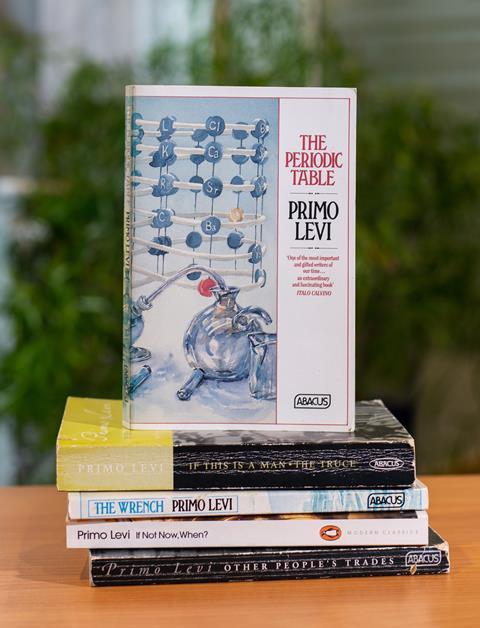
His work at Duco furnishes the chapter ‘Chromium’ from The Periodic Table, in which he is asked to find out why tins of chromium orange anti-rust paint had congealed. Levi’s investigations enabled him to ‘resurrect’ the fluid paint from an ‘indecent death’ as a slippery, semi-solid mass. With glee (and artistic licence, it seems), he claims that the ammonium chloride he added to the defective paint to counteract the error made in its formulation is still ‘religiously ground into the chromate anti-rust paint on the shore of that lake, and nobody knows why anymore.’
This is characteristic of the tales that make up The Periodic Table, which he published in 1975. They are versions of the truth, rearranged and ordered to turn life into literature while retaining the essence that makes these chemical anecdotes vehicles for exploring humanity in all its rich strangeness, wonder, passion and horror. In this much, Levi’s writing resembles that of Oliver Sacks, who comes a close second to Levi in transmuting a delight in chemistry into literary gold with his 2001 memoir Uncle Tungsten.
Levi didn’t stay long at Duco. In summer 1947 he left the factory to set up a chemical consultancy with his friend Alberto Salmoni. That was unlike his cautious nature, all the more because he was about to get married (to Lucia Morpurgo). This venture with the flamboyant Salmoni furnished all kinds of chemical escapades, many conducted in a makeshift lab in the Salmonis’ house, crammed with vats of sulfuric acid, tin chloride and other reagents. They tried and failed to make the dye alloxan for cosmetics from chicken faeces, as described in the ‘Nitrogen’ chapter of The Periodic Table.
If This is a Man was published towards the end of that year, just after Levi married Lucia. The reviews were excellent – most notably from the famous Italian author Italo Calvino, who saw that this was no mere memoir but a work of ‘authentic narrative power’. Yet Levi didn’t become a full-time writer; he continued to work as a chemist, acting as technical director and troubleshooter for the paint and varnish company Siva between 1947 and 1961 while publishing only some short stories. The Truce didn’t appear until 1963, by which time If This is a Man had been translated into English and made his name internationally.
Man of letters
It’s clear in retrospect that The Periodic Table had been in gestation for much of Levi’s life. During his earliest chemical enthusiasms he had imagined the story ‘Carbon’, which tells of the journey of a carbon atom across hundreds of millions of years – fixed in limestone, liberated by a pickaxe and becoming carbon dioxide, photosynthesised into a grape vine, drunk as wine and exhaled, and finally finding its way into Levi’s own brain to guide his hand ‘to impress on the paper this dot, here, this one’ – with which the story, and the book, concludes.
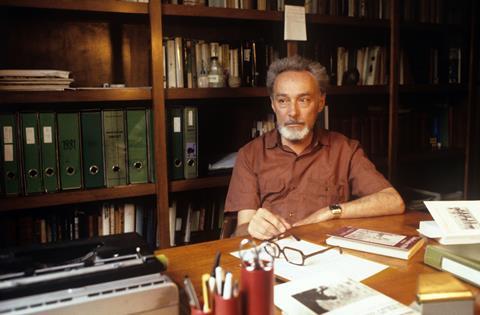
Nothing like The Periodic Table had ever been attempted before, and it’s not clear that anything has since; the book is sui generis. There are bursts of pure chemistry, alive with his love of the subject: ‘Nothing of the generous good nature of tin, Jove’s metal, survives in its chloride… This salt is an energetic reducing agent, that is to say, it is eager to free itself of its two electrons and does so at the slightest pretext, sometimes with disastrous results.’
But here too is chemistry as metaphor for human relations – a trick not tried since Goethe’s 1809 novel Elective Affinities. Inert argon and its sibling noble gases represent Levi’s ancestors, Jewish settlers in Turin from Spain: alien like xenon, hidden like krypton, reserved and separate in ‘an attitude of dignified abstention’.
The Periodic Table was even more successful than If This Is a Man: it won prizes, sold tens of thousands, and made Levi a literary superstar. When it was published in English in 1984, literature Nobel laureate Saul Bellow chose it as his book of the year, saying ‘everything this book contains is essential’. It gave Levi the confidence to pursue this ‘science in fiction’ with a novel, The Wrench (1978), which tells the story of an engineer named Faussone through the eyes of a chemist narrator – a ‘rigger-chemist’ who worked in a paint factory, and who is obviously an alter ego of the author. The device gives Levi the opportunity for his most marvellous exposition on the art and craft of molecule-building, and the desires of synthetic organic chemists to find more precise tools:
But we are still blind, even in the best circumstances, that is, with structures that are simple and stable. Blind, and we don’t have those tweezers we often dream of at night, the way a thirsty man dreams of springs, that would allow us to pick up a segment, hold it firm and straight, and paste it in the right direction on the segment that has already been assembled. If we had those tweezers (and it’s possible that, one day, we will), we would have managed to create some lovely things that so far only the Almighty has made, for example, to assemble – perhaps not a frog or a dragonfly – but at least a microbe or the spore of a mold.’
It’s easy to imagine how delighted Levi would have been to see nanochemistry, click chemistry, molecular and DNA nanotechnology and synthetic biology come to pass.
Primo Levi’s death was personal. It was a tragedy, but it was not a victory for Auschwitz
This might not have been the last of Levi’s chemical allegories. From the 1970s until the end of his life he struggled with a manuscript called The Double Bond, a meditation on human relationships – from an early draft of which most of The Wrench was drawn. The book was meant to be a kind of twin to The Periodic Table, as immersed in organic chemistry as that one was in inorganic. In one draft chapter he digresses for several pages on the chirality of the carbon atom, the structures of the molecules of life and how they could have arisen.
The Double Bond seemed to represent something he couldn’t resolve. He kept returning to it as he published other books, but never completed it. Wrapped up in these drafts is perhaps a personal struggle that lasted all his life, and which would from time to time plunge him into depression.
Levi was found dead at the foot of the stairs in his home in 1987, having fallen three floors onto flagstones. His skull and most of his bones were broken, and it was widely assumed that he had committed suicide. That’s still debated, but the deep depression into which he had descended in the months before his death makes it likely. Yet that is no reason to believe that, as one headline had it, ‘Auschwitz killed him 40 years later.’ Depression and suicide were in him from the start, says Angier. ‘Primo Levi’s death was personal. It was a tragedy, but it was not a victory for Auschwitz.’ I believe that too.
But in his books, and in The Periodic Table in particular, Levi had already triumphed over that terrible crime against humanity. Wisdom, compassion and curiosity shine from every page he wrote. ‘What has survived in Levi’s writing isn’t just his memory of the unbearable’, said Roth, ‘but also, in The Periodic Table and The Wrench, his delight in what made the world exquisite to him.’
Philip Ball is a science writer based in London, UK
We’re discussing The Periodic Table in July’s bookclub podcast – share your views of this classic work with @ChemistryWorld on Twitter using #BookClubCW

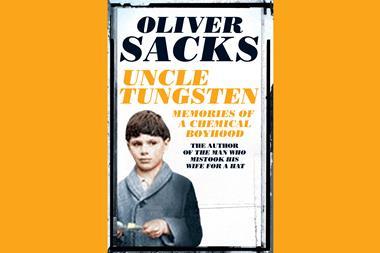
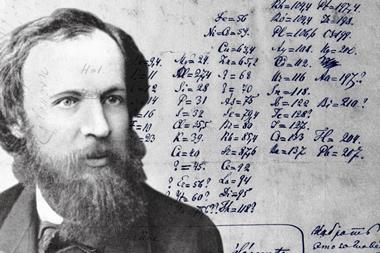










No comments yet